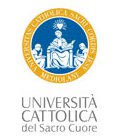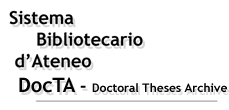|
|
DocTA - Doctoral Theses Archive >
Tesi di dottorato >
CORSO DI DOTTORATO IN ECONOMIA >
Citazione:
Utilizza queste indicazioni per citare o creare un link a questo documento.
|
Gattini, Luca. "QUALITY MEASUREMENT AND QUALITY IN PRICES INDEXES", Università Cattolica del Sacro Cuore, XXI ciclo, a.a. 2008/09, Milano, [http://hdl.handle.net/10280/674].
|
| Titolo: | QUALITY MEASUREMENT AND QUALITY IN PRICES INDEXES |
| Autore/i: | GATTINI, LUCA |
| Tutor: | CAMPIGLIO, LUIGI PIERFRANCO |
| Coordinatore: | WEINRICH, GERD HELLMUT |
| Lingua: | ENG |
| Abstract in inglese: | Rapid technical progress has increased the speed of quality change. Its impact has a large
scale effect on a broad set of variables and it has exacerbated a latent economic problem on
the measurement of true economic variables. For example, the reliability of the Consumer
Price Index (CPI) has been increasingly undermined since it has been argued that price
indexes suffer either an upward or a downward bias due to quality change in goods and
services. This paper is aimed to be a comprehensive survey on historical contributions to
modeling quality from a theoretical perspective. The fundamental contributions of several
economists are framed into a coherent building block. We construct a general framework
for quality adjustment in price index theory which helps to understand the importance of
economic theory for price index definitions. Supply and demand side models are analysed
and merged into Rosen (1974) model, the first well grounded attempt to construct a
general equilibrium explanation to quality choices. First, we address the issue of quality measures into price index theory. Then,
we present a survey of the relevant contributions to hedonic price modeling. We focus on
two main fields of applied analysis: (1) determining how the price of a unit of commodity
varies with the set of attributes; (2) estimating the demand and supply functions for the
attributes of products. The open issues on quality adjustment in consumer price indexes
will be analysed in the two applied papers, namely chapter 3 and chapter 4. They are two
applied original contributions to hedonic price literature. Chapter 3: In this paper we show that a real time measure of pure price change for different varieties
of non durable volatile and seasonal products is possible. Moreover, we introduce the idea
of unobservable elements captured by brand specific and by time specific dummies. In
order to compute a pure price index, a theoretically correct quality adjustment procedure
has been determined where quality is measured in terms of attributes (Griliches, 1971a,
1971b; Tauchen and Witte, 2001; Pakes, 2003; Ekeland et al. 2002, 2004; Triplett 2004)
and it is becomes a ’fundamental’ of the market. We have analyzed the prices of apples
and oranges traded in the General Milan Market for fruit and vegetables. We have used a
large amount of information from more than 8000 of observations collected between 2000
and 2004. We have found that quality is changed over time even if new goods/varieties
were not introduced. Price levels adjusted for qualitative levels, measured in terms of
the content of characteristics, are above the Laspeyres hedonic price index on average for
apples whilst the pure price index for oranges is close to the Laspeyres price index. Our
empirical analysis shows that a price index, which does not account for quality change, is
underepresiting inflation for apples and correctly measuring price changes for oranges. Chapter 4: The relevant literature dealing with the problem of quality measurement in passenger
cars (inter alias, Ohta and Griliches 1976, 1983; Lancaster (1966), Rosen (1974), Berry et
al. 1995; 2004) relies on general hedonic imputation methods for the assessment of the
quality adjusted price index. We deviate from this standard approach by computing a new
quality adjusted index for cars based on a weighted adjustment procedure which accounts
for attrition due to observable elements (Fitzgerald et al., 1998; Nevo, 2003; Horowitz and
Manski, 1998). By doing this, we are able to define a quality adjusted price index which
generates a more accurate identification of price index levels than the current state of the
art. We use data for the universe of new cars and their characteristics, sold between 2000
and 2007 in Italy, and we identify the basic reference unit. Based on this we study the
pricing behavior of the firms. We model a non random and non ignorable selection process
based on an entry/exit process of cars (Olly and Pakes, 1996) due to profit maximizing
firms in a differentiated product space. We find that the official index is overestimating
inflation since our results point to a mild deflation. However we show that traditional
hedonic techniques lead to an overestimation of quality improvement and consequently
they under-estimate inflation. |
| Data di discussione: | 3-feb-2010 |
| URI: | http://hdl.handle.net/10280/674 |
| È visualizzato nelle collezioni: | CORSO DI DOTTORATO IN ECONOMIA
|
File in questo documento:
| File |
Dimensioni | Formato | Accessibilità |
|---|
| testo_completo.pdf | 1,67 MB | Adobe PDF | non consultabile
|
|
Accesso e utilizzo dei contenuti di DocTA
|



